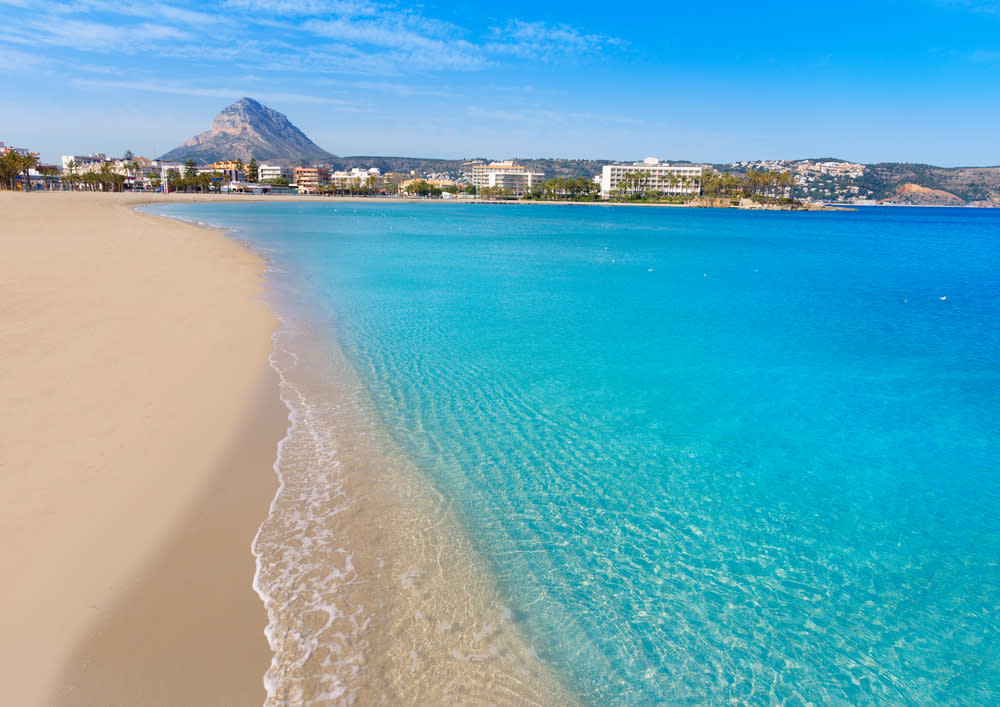More from Javea
Main Menu
- 00:00
- 06:00
- 12:00
- 18:00
- 23:00
Javea : Next 24-Hour Weather
Today - 16th April 2025
Sunrise 07:22
Sunset 20:37
Tomorrow - 17th April 2025
Sunrise 07:22
Sunset 20:37
Holiday Weather Now
Sorted by popularity:
Updated at 16:00 GMT
-
Temp feels like16°C62°F
-
Length of day13h 15m
-
Pressure29" (1012 hpa)
-
Visibility10 km (6miles)
-
Wind speed17 km/h
Sunrise 07:22
Sunset 20:37
-
Temp feels like:
16ºC (62 ºF)
-
Length of day:
13h 15m
-
Pressure:
29" (1012 hpa)
-
Visibility:
6 miles (10 km)
-
Wind speed:
17 km/h
Weather Javea
Lying in the Alicante region of Spain, with a unique microclimate that has been voted by the World Health Organization as one of the healthiest in the world, is the small coastal town of Javea. Javea sits on the Costa Blanca and its location at the end of a small peninsula jutting into the Mediterranean has lead it to being fondly known as the âjewel in the crownâ of the Costa Blanca.
Javea is a popular destination year-round. It is famed for receiving the most hours of sunshine in Spain. For those living in the north of Europe where daily sunshine falls to 1 or 2 hours in the middle of winter, the 6 hours of sunlight that Javea sees in January is quite appealing!
Winter temperatures in Javea are very mild, a standard characteristic of a Mediterranean climate. The coldest month is January which sees a daily high of 16°C and a daily low of 6°C. December and February also see maximums of 16°C but minimums will fall to about 7°C. During winter the Mediterranean Sea still sits at about 15°C which the very brave might consider swimming in.
Rainfall in Javea is at its highest in October which records, on average, 81 mm of rain for the month. It dies off slightly in November before falling to 32mm in January and staying in the 30âs right through until May. From the end of May, right through until the end of summer, rainfall is minimal. July only records 9mm of rainfall across the month.
July is the busiest, hottest and driest month of the year in Javea and sees the Arenal Beach area become a 24 hour playground. The city is divided into three areas: Javea Pueblo, the Old Town, which is home to winding narrow streets and Spanish culture; the Javea Porto (Port Area) which is a working fishing port in which large fishing vessels are docked amongst luxury yachts - an enjoyable place to visit and sit in on of the many dockside cafes; and finally, the busiest and most popular area is the Arenal Beach (Playa de Arenal) which is a crescent-shaped, clean, sandy beach lined with cafes, bars, clubs and restaurants.
June will see the mercury rise to highs of 26°C and only fall to lows of 17°C. July has highs of 29°C and lows of 20°C. From July to September the thermometer will often record temperatures over 30°C and the temperature can stay over 30°C for days on end. In summer the waters of Playa de Arenal will be an enjoyable 24°C to 26°C, which is perfect for escaping the heat. (See here for annual sea temperatures.)
During summer visitors and residents will bask in a glorious 11 hours of uninterrupted sunlight and only 1 or 2 days of rain each month. The evenings are cooled with the sea breezes off the Med, which makes for a great atmosphere to sit beach side and enjoy a glass (or 5) of Sangria.
The town, while very popular with ex-pats, hasnât been inundated with package holiday crowds. There are only a handful of hotels in the town so most visitors pre-arrange short-term rentals and apartments for the duration of their stay.
Javea is situated midway between the Alicante and Valencia airports, in the shadow of Montgo Mountain which provides the town with a dramatic and distinctive backdrop. It is The Montgo that contributes to Javea having such a healthy climate, as it shelters the town from rain and sends fresh mountain air down to meet the coastal breezes.
The locals like to think that The Montgo was once a giant elephant that turned to stone, with its trunk reaching into the sea.

















